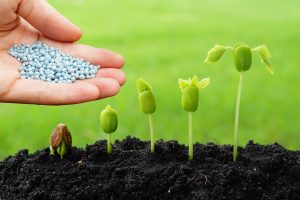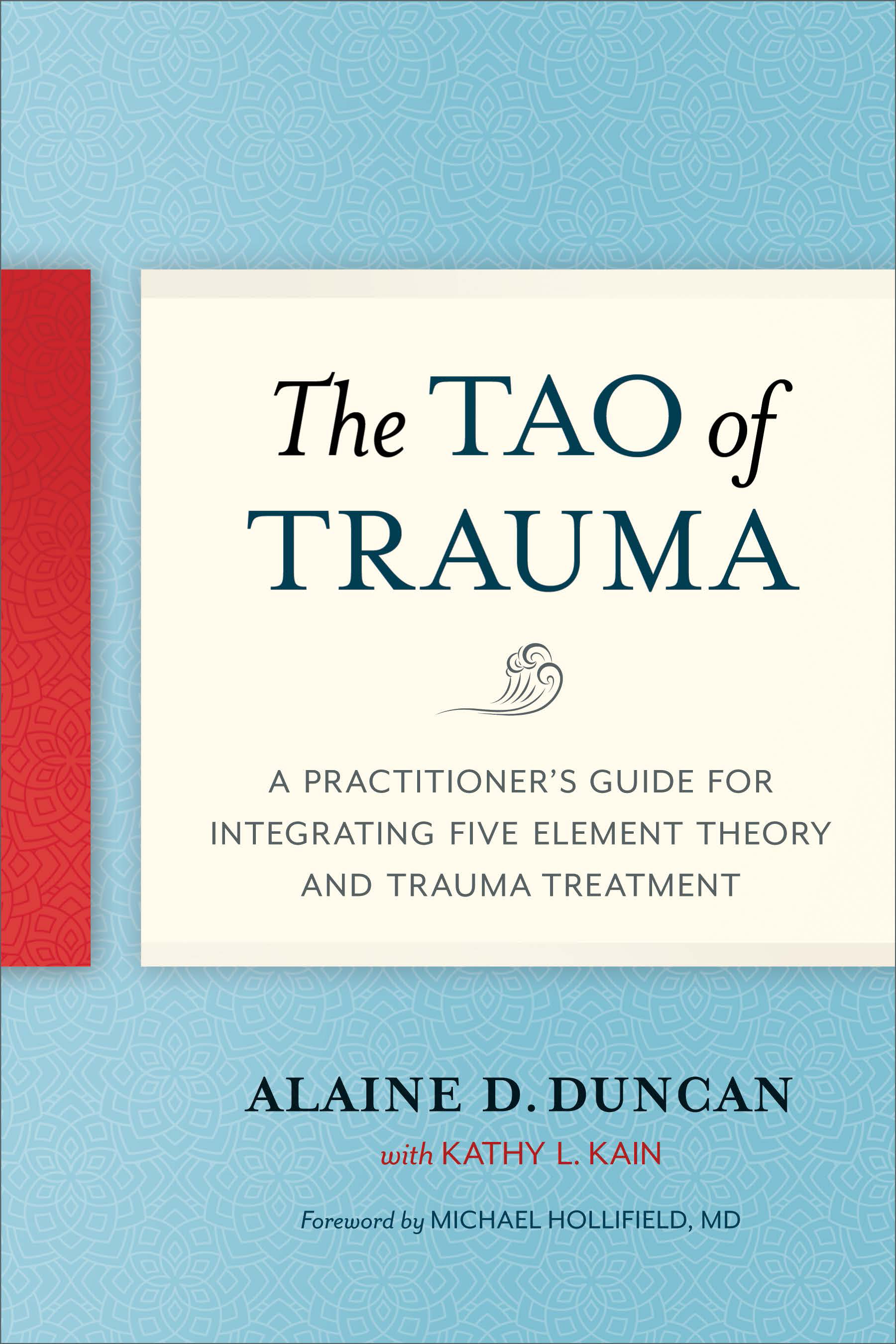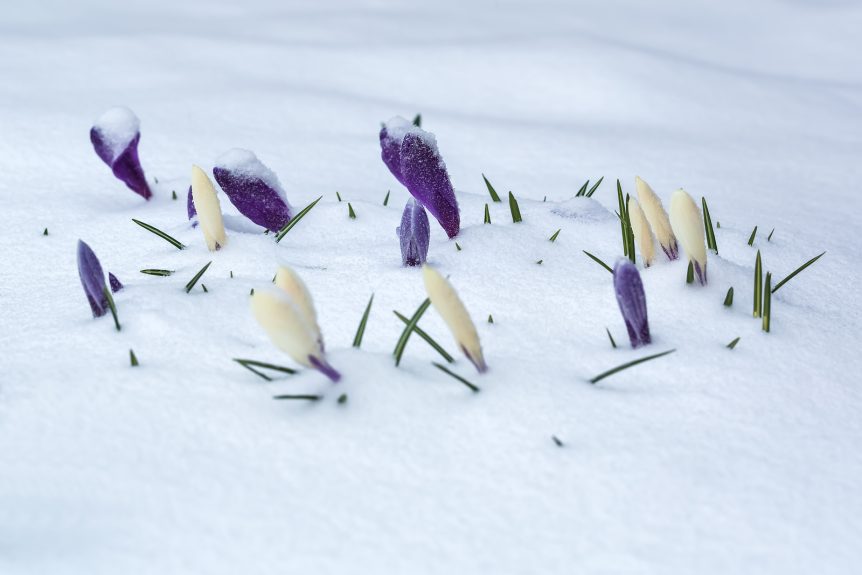Trauma Training Tip
The Lunar New Year, this year on February 5th, marks the arrival of spring and the Wood Element — the time when the sapent p in trees begins to soften and move in early February. Like all visions, dreams, and aspirations, Spring’s vibration begins long before it manifests in tangible form as sprouting plants. What has been held deeply within during the Winter now takes shape and form. All of creation comes out of hibernation with a full tank of qi and dynamic vitality. We may feel a spring in our step and see signs of life returning. Spring arrives in punctuated bursts, with force and power.
The Wood Element’s essential nature is benevolence – trees manifest this in their function to transform carbon dioxide into oxygen for all life to flourish. The Wood Element gives us the capacity to mount a response to a threat that is commensurate with the level of a particular threat. It mirrors the function of the Sympathetic Nervous System – and is always “on” to protect and defend ourselves and others.
We rely on our capacity for relationship and connection to help us temper our arousal – and prevent it from being colored by previous thwarted experiences of threat that may otherwise cause us to over-respond in anger or violence – or under-respond, finding ourselves to be a “doormat”, unable to protect or defend ourselves or others.
Strong emotions are controlled by our more primitive “lizard” brain. They can cause us to be convinced that “it’s a snake” when it’s really a “rope”. We may say regrettable things, or take regrettable actions that are not commensurate with the level of threat we are experiencing. To use the phrase of Resmaa Menakem in My Grandmother’s Hands: Racialized Trauma and the Pathway to Mending Our Hearts and Bodies, we can “blow our anxiety through someone else’s body”.
 No subject in the United States is more characterized by decisions that grow out of a frozen lizard brain limiting the options of the Wood Element to angry insensitive words or violent actions – instead of its true expression of benevolence and protection for others – than the dynamics of race in our communities.
No subject in the United States is more characterized by decisions that grow out of a frozen lizard brain limiting the options of the Wood Element to angry insensitive words or violent actions – instead of its true expression of benevolence and protection for others – than the dynamics of race in our communities.
In honor of Black History Month, I dedicate this month’s newsletter to the many people working, thinking, and helping us all to understand, transform, and act on overcoming our prejudices and creating healthy communities for all our children to grow up in.
Alaine’s Two Cents
Shakil Choudhury is one such person. His book, Deep Diversity: Overcoming Us vs. Them, ties the challenges of bias and prejudice to our biology and our conditioning. His approach is applicable to the automatic responses we may have related to race, class, gender, education, income, nationality, religion, or any “them”.
 He transcends the more familiar cognitive, ideological, and linear approaches in diversity education and offers us an understanding of the neurobiology of transformation and a critical foundation in psychological literacy that supports deep self-reflection, self-regulation, and compassion. He offers all of us an approach to overcoming prejudices that is critical to our growing ability to create a healthy and coherent community.
He transcends the more familiar cognitive, ideological, and linear approaches in diversity education and offers us an understanding of the neurobiology of transformation and a critical foundation in psychological literacy that supports deep self-reflection, self-regulation, and compassion. He offers all of us an approach to overcoming prejudices that is critical to our growing ability to create a healthy and coherent community.
Check This Out!
 Lisa Dale Miller — clinician, author, and host of the Groundless Ground podcast — has an amazing mind and a fabulous, intelligent, clear, and open-hearted interviewing style. I greatly enjoyed my conversation with her, exploring the intersection of neurobiology, acupuncture and Asian medicine, and body-centered healing practices as detailed in The Tao of Trauma. You can listen to our conversation here!
Lisa Dale Miller — clinician, author, and host of the Groundless Ground podcast — has an amazing mind and a fabulous, intelligent, clear, and open-hearted interviewing style. I greatly enjoyed my conversation with her, exploring the intersection of neurobiology, acupuncture and Asian medicine, and body-centered healing practices as detailed in The Tao of Trauma. You can listen to our conversation here!
If you’ve read The Tao of Trauma, and want the world to know what you think – post a review on Goodreads, Books-A-Million or Amazon. It can make a big difference for an uninitiated reader.
Clinical Curiosity
Where is your clinical curiosity carrying you?
Send me a question or two and I will explore them with readers in this corner next month.
Q. I asked my patient to take themselves to a place that was safe or neutral for them – and they brought forward an image of a dear beloved, who is now deceased. She immediately was taken to profound grief over the loss of her treasured grandfather who was an oasis in the midst of an otherwise abusive family.
A. This is a great example of how connected yin is to yang. The front of the hand is connected to the back of the hand, we see the light of a candle more clearly in a dark room – and interestingly, when we cut our finger and start bleeding, the hormones to help our blood clot are secreted at the same time. Everything has a dual nature. Trauma is connected to our healing. We need to access both states – but in bite-sized proportions and with a container around them.
Can your patient divide her image into its two aspects? First how safe/secure/grounded she feels in the presence of her grandfather and how much she loves him. Help her stay anchored in this state long enough to harvest the experience of safety in a sensate way. Then invite her to notice the grief she experiences with this loss? Give her time to notice the sensate experience of the “outside edge” of that grief, and then come back to the safe/secure/grounded experience. Try doing tick/tock between those two ways of holding the same person and see what happens. Let us know.


